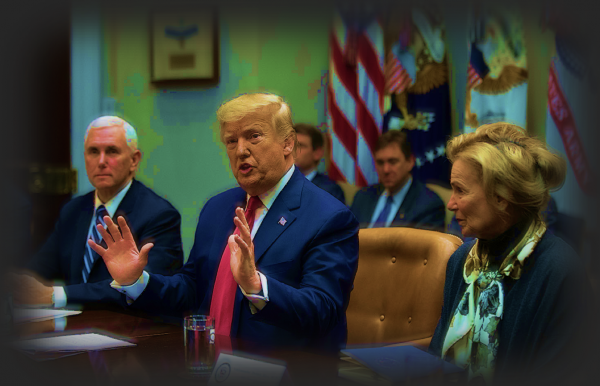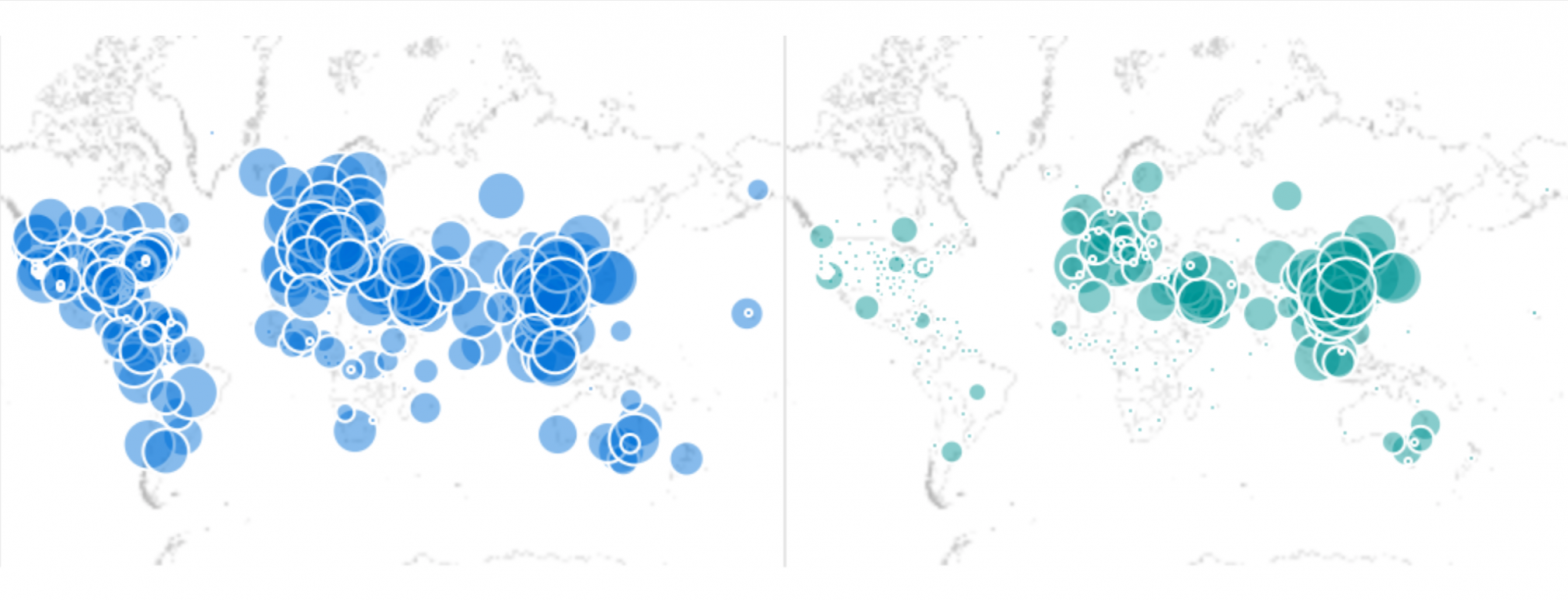The decisive move will show the CPC we mean business.
Trump Has What He Needs To Defeat Coronavirus

It’s complicated, but we’ve been preparing for this.
In September 2018, President Trump unveiled the first National Biodefense Strategy the U.S. has ever adopted. It laid out a series of priorities and goals that would move us for the first time toward a coordinated, all-means-of-national-capability response to biological events, whether natural or resulting from a biological attack.
The key word there is toward. Later that year the Pacific Northwest National Laboratory introduced a publicly available tool that maps out current biodefense responsibilities. The tool also displays the tangle of laws, directives, and agencies that together are intended to protect U.S. citizens. It is telling that the nickname for this tool is “the spaghetti monster.” Click on that link and browse the site to get some idea of what a complex mess things were in in 2018, and still are to a fair degree since it was last updated late in January.
Nonetheless, the National Biodefense Strategy marked a significant step forward in preparing for potential crises. It argues that an increasingly interconnected world puts the U.S. at risk of biological threats no matter where they originate or in what way. An April 2019 Summit was held to address implementation of the strategy. The transcripts of all of the talks, minus one from the Blue Ribbon Study Panel on Biodefense that was classified, are available online and worth careful reading. In January, the GAO reported on challenges and opportunities in implementing the strategy.
The National Strategy lays out five key goals:
- Enable risk awareness to inform decision making across the biodefense enterprise (see “spaghetti”). This includes analyses and research to characterize deliberate, accidental, and natural biological risks, and surveillance and detection activities to detect and identify threats and anticipate incidents.
- Ensure biodefense enterprise capabilities to prevent bioincidents, including naturally occurring disease and laboratory accidents, consistent with our counter-WMD activities. This includes disrupting plots, degrading technical capabilities, and deterring support for terrorists seeking to use bioweapons. It also acknowledges the importance of dual-use biological research.
- Ensure biodefense preparedness in order to reduce the impact of bioincidents. This includes maintaining a vibrant science and technology base, ensuring strong public health infrastructure, developing/updating/exercising response capabilities, establishing risk communications, developing and efficiently distributing/dispensing medical countermeasures, and preparing to collaborate across the country and internationally to support biodefense.
- Rapidly respond to limit the impacts of bioincidents through information sharing and networking, coordinated operations and investigations, and effective public messaging.
- Facilitate recovery to restore the community, economy, and the environment after a bioincident. This includes actions to restore critical infrastructure services and capability, coordinate recovery activities, provide recovery support and long-term mitigation, and minimize cascading effects here and around the world.
In other words, responding to a bioincident like the current spread of the SARS-CoV-2 virus today requires significantly more than rushing out tests and giving soothing messages—or is it panicked messages we are now demanding from the administration?
In a world where increasingly complex, interconnected, and interdependent networks are central to our social, economic, geopolitical, and economic well-being, attempts to intervene in local ways can be counterproductive, as network science has shown. But creating the real coordinated capabilities that the National Biodefense Strategy calls for is not an overnight process. There are plenty of entrenched bureaucrats who have been resisting any of the real oversight and coordinated decision-making that is needed. And our federal/state governance mechanisms add yet another dimension to be incorporated in responding to any specific event.
That said, consider some of the measures that were ready to be rolled out shortly after the president declared a national emergency on March 13:
- Legislation to provide tax credits and even in some cases cash advances to small and medium-sized companies in order to provide paid leave to employees who must stay home as schools close or they self-quarantine.
- Temporary suspension of regulations on trucker hours so that stores wiped out by panic buying can replenish shelves.
- A moratorium on cruise line travel, and additional restrictions on travel to the U.S. from certain affected countries.
- Suspension of cumbersome and slow FDA/CDC tests and procedures to deploy tests developed by commercial and academic labs in high-throughput drive-through stations, in collaboration with drug store chains like Walgreens and CVS.
- Rapid manufacturing and distribution of millions of test kits, along with strict guidelines regarding how the results must be reported back to CDC so we can track what is going on out there.
This pandemic arose before we had the National Biodefense Strategy fully implemented. But even in its nascent state it has informed the coronavirus task force headed by Vice President Pence. When the national emergency was declared on March 13, the task force had already coordinated with state governors and with key industry leaders, legislation was already being negotiated with Congress through long hours by Treasury Secretary Steve Mnuchin, and DoD was already primed to immediately issue travel restriction orders to military and civilian personnel and their families. White House advisor Peter Navarro is preparing an executive order for Trump to reduce dependence on foreign medicines, and much more is in the works besides.
When I managed the basic research grant program at the U.S. counter-WMD agency—an agency which, along with NIH, funded the accurate model of the H1N1 influenza spread and identified the only effective counter-strategy—nothing like this kind of coordination beyond the immediate biological issues was in place. That national emergency was not declared by President Obama until 1,000 Americans had already died of H1N1.
Today the effective responses include rapid deployment of testing, serious social distancing to thwart the pathogen’s spread and keep from overwhelming emergency medical capacity, and the rapid development of vaccines, blood plasma transfer treatments, and potential medicines. All of those are underway. Keep calm, keep your distance from usual places and people, and with those efforts and some grace we can get through this by mid-summer.
The American Mind presents a range of perspectives. Views are writers’ own and do not necessarily represent those of The Claremont Institute.
The American Mind is a publication of the Claremont Institute, a non-profit 501(c)(3) organization, dedicated to restoring the principles of the American Founding to their rightful, preeminent authority in our national life. Interested in supporting our work? Gifts to the Claremont Institute are tax-deductible.
In wars, men die.
For the first time in centuries, we’re bringing it all back home.
Facing up to the failed state of America's mandarin class
Don’t let the Left use your panic for their gain.
We blew it. Normies are paying a heavy price.






